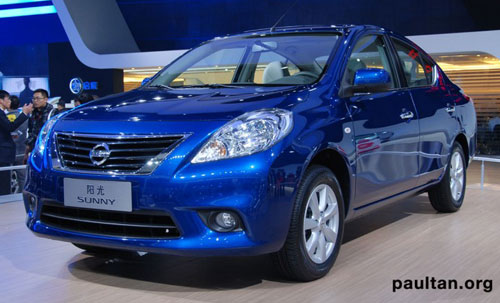Nissan has announced a new six-year business development plan for the ASEAN region, with the objective of more than tripling sales to 500,000 units with a 15% market share by the end of 2016 from the 150,000 units and 6% market share it had in 2010.
The new mid-term plan, unveiled by Nissan Motor Asia Pacific (NMAP), identifies a number of areas to achieve its goals. The first is preparing for Indonesia’s low cost green car programme, which is initiated by the Indonesian government. The second is to double the regional production capacity from 350,000 to 700,000 units per year.
The plan also calls for an acceleration of localisation of R&D as well as powertrain production in the region – the Nissan Technical Center South East Asia will be expanded in Thailand and Indonesia with a tripling of total engineering staff by 2016.
In addition, Nissan’s affiliate company JATCO will invest 20 billion yen (US$250 million) to establish a new manufacturing plant to produce continuously-variable transmission (CVT) units in Thailand. It will be the first company to locally produce CVTs in Thailand.
The automaker also plans to invest 25 billion Japanese yen (US$312.5 million) in Indonesia for further growth, primarily on plant expansion – to increase production capacity to 180,000 units by 2013 – and a new engine assembly plant.
The establishment of NMAP, which is a new, strategic regional headquarters located in Thailand, will be in charge of developing the progress of this expansion.
Alongside all this will be the introduction of a “Power Up 2016” program by the company in Thailand, and this one looks to deploy more than 10 new models during the period. The first of these is will be the company’s second eco-car in the country, the Nissan March sedan. Production of the Honda City / Toyota Vios competiitor – very possibly the Sunny, as it’s badged in China – scheduled to begin in September.
Looking to sell your car? Sell it with Carro.



















AI-generated Summary ✨
Comments reveal a mix of frustration and criticism regarding Malaysia's automotive policies, protectionism, and industry development. Many believe policies favor local cronies and hinder foreign investment, leading to reliance on outdated models and lost opportunities to neighboring countries like Thailand and Indonesia, which benefit from cheaper labor and larger markets. There is concern over protected national car brands and high import tariffs creating an over-reliance on rebadging and dumping models, rather than fostering innovation. Some commenters express hope for positive change through foreign direct investment, especially from automakers like Nissan, and critique the government’s slow or ineffective policies. Overall, sentiments lean toward dissatisfaction with current automotive policy and optimism for ASEAN expansion involving Thailand and Indonesia.